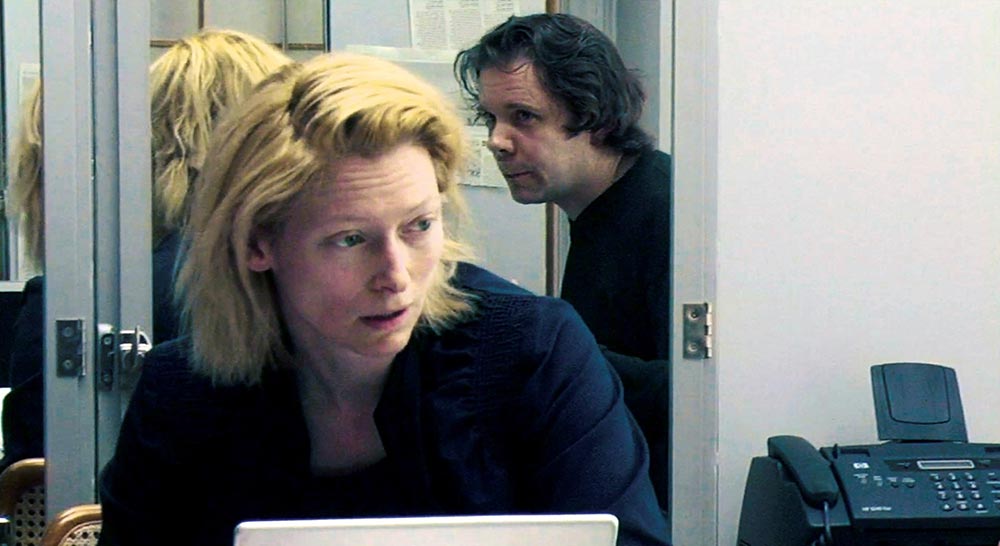“Artists don’t have all the information that they need in order to do certain projects—so they’re always collaborating with experts,” says curator Steve Dietz in Strange Culture (2007). Written, edited, and directed by multimedia artist Lynn Hershman Leeson, the documentary weaves facts with dramatization across multiple cinematic layers where artists and experts collaborate on their roles throughout.
In 2004, Dr. Steven Kurtz and his wife Hope, founding members of the collective Critical Art Ensemble, are preparing their “live, performative action” piece Free Range Grain for a museum show where visitors will get to test foods for genetically modified organisms (GMOs). CAE consults geneticist Dr. Robert Ferrell, and the Kurtz home becomes a $256 science lab of harmless bacteria, purchased by educational distributors online.
But in Strange Culture, we are not watching Dr. Steven Kurtz and Hope Kurtz. We are watching actors Thomas Jay Ryan and Tilda Swinton perform as the Kurtzes, a clapboard in shot documenting the documentary’s docudrama. Here, reenactment is used as a proxy to convey what was not fully recorded, nor can fully be told by those originally involved.
The night before shipping the last of the bacteria to the museum, Hope unexpectedly died of heart failure in her sleep, at the age of 45, with no prior history of health concerns. After Steve’s call to 911, the FBI illegally detained him, during which his belongings, research, artworks, and Hope were taken from him. He was suspected of bioterrorism due to the harmless bacteria cultures growing in his home. “Steve Kurtz is unable to comment on events that occurred immediately prior to his arrest,” we are told. “Actors have interpreted his story.”
In a court of law, evidence must be considered and interpreted as the facts of a case in order to serve fair justice. Yet despite the overwhelming evidence of Kurtz’s harmlessness, which he himself describes in Strange Culture, his case dragged on for four years. In 2008, the indictment against him was finally dismissed, long after filming had wrapped. “Even if the actions alleged in the indictment (which the judge must accept as ‘fact’) were true,” explains the statement by the CAE Defense Fund, “they would not constitute a crime.” The Kurtzes had done nothing illegal. But in a post-9/11 homeland riddled with paranoia, the government could not admit to being wrong about it.
Hershman Leeson gives Kurtz a medium for sharing his injustice and for honoring Hope, while employing actors to say what Kurtz cannot discuss—experts helping experts for art. As Kurtz tells an interviewer, his case won’t affect only him, but all artists and art institutions thereafter. It is a dark reminder of how fragile our freedoms really are, even when it’s just art imitating life.
Strange Culture screens tonight, June 12, at the Museum of Modern Art as part of the series “Lynn Hershman Leeson: Moving-Image Innovator.”



